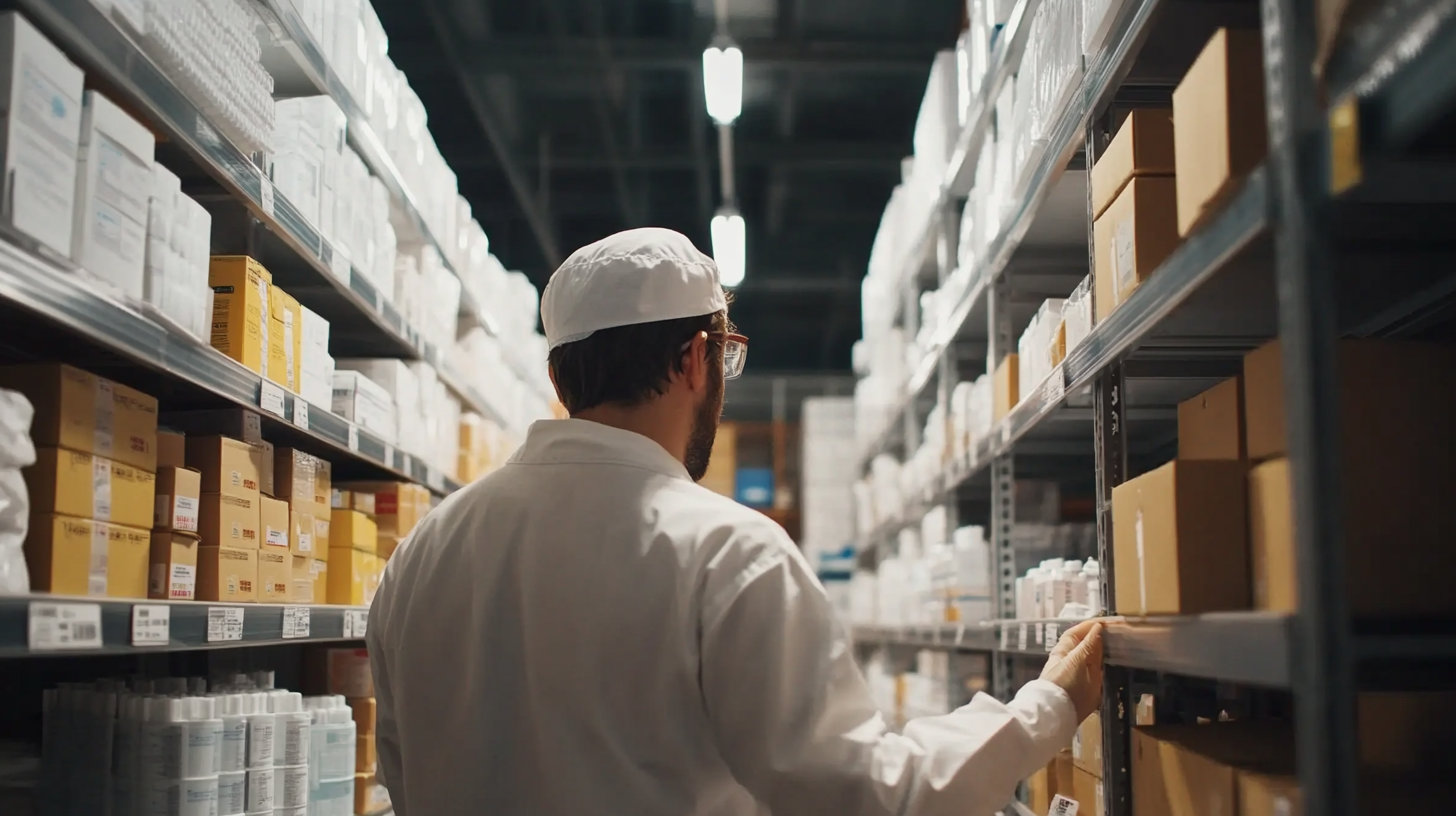5 Essential Strategies to Combat Antibiotic Resistant Bacteria in Global Supply Chains
In an era where global interconnectedness is at an all-time high, the threat of antibiotic resistant bacteria looms ever larger over our supply chains. These pathogens, which have evolved to withstand even the most robust antibiotic treatments, pose significant risks not only to public health but also to the integrity of our food systems and healthcare services. As antibiotic resistant bacteria continue to proliferate, the challenge for industries worldwide is to develop effective strategies that can mitigate the spread of these dangerous microorganisms. By addressing the root causes and implementing robust prevention measures, we can protect both consumers and businesses from the repercussions of antibiotic resistance.
As we delve into the critical need for effective strategies, it's imperative to recognize that the battle against antibiotic resistant bacteria requires a collaborative effort across various sectors. From agriculture to pharmaceuticals, each stakeholder in the supply chain must play an active role in combatting this issue. This blog will outline five essential strategies that can be employed to tackle antibiotic resistance head-on, ensuring that our products and services remain safe and reliable. By fostering a proactive approach, we can not only enhance our resilience against antibiotic resistant bacteria but also safeguard our global health landscape for future generations.

Understanding the Scope of Antibiotic Resistance in Supply Chains
Antibiotic resistance is a growing concern in global supply chains, significantly affecting industries such as agriculture and pharmaceuticals. According to the World Health Organization, an estimated 700,000 deaths occur each year due to antibiotic-resistant infections, and this figure is projected to rise to 10 million by 2050 if measures are not taken. The prevalence of resistant bacteria can be traced back to the overuse and misuse of antibiotics in livestock, where approximately 80% of all antibiotics sold in the U.S. are used in animal agriculture. This rampant use creates a breeding ground for resistant strains, which can then enter the human food chain, posing serious health risks. In supply chains, every link can be a potential risk factor for the spread of antibiotic-resistant bacteria. For instance, the Centers for Disease Control and Prevention (CDC) has reported that foodborne pathogens, often originating from farms, account for nearly 50% of antibiotic-resistant infections. Companies must be vigilant and enforce strict antibiotic stewardship policies to mitigate this risk. Ensuring transparency and traceability in supply chains can help identify and eliminate sources of contamination, safeguarding both public health and business credibility. Moreover, the economic impact of antibiotic resistance is staggering. A report from the Review on Antimicrobial Resistance estimates that the global economic burden could reach $100 trillion by 2050 if the current trend continues. This highlights the urgent need for all stakeholders in the supply chain, from producers to consumers, to adopt strategies that prioritize responsible antibiotic use and reduce the incidence of resistance. Emphasizing sustainable farming practices, rigorous testing, and collaborative efforts among supply chain partners can pave the way for more resilient systems against antibiotic-resistant bacteria.

Identifying High-Risk Areas in Global Supply Chains for Resistance Development
In recent years, the global supply chains have become increasingly susceptible to antibiotic-resistant bacteria, making it essential to identify high-risk areas where resistance can develop. According to a report by the World Health Organization, an estimated 700,000 people die each year due to antibiotic-resistant infections, a number projected to rise to 10 million by 2050 if no action is taken. This alarming trend underscores the importance of scrutinizing various stages of the supply chain, from production to distribution.
Farms and agricultural operations represent some of the highest-risk areas for the development of antibiotic resistance. The widespread use of antibiotics in livestock to promote growth and prevent disease has been linked to the proliferation of resistant strains. A study published in the journal "Environmental Health Perspectives" found that 60% of antibiotics sold in the U.S. are used for livestock, raising concerns about the potential for these resistant bacteria to enter the food supply. As consumer awareness increases, organizations must adopt more stringent antibiotic use policies to mitigate these risks.
Manufacturing and distribution networks also play a critical role in exacerbating the problem. Facilities that lack proper sanitation or oversight can become breeding grounds for resistant bacteria, which can spread through products and surfaces in food processing environments. A report by the U.S. Centers for Disease Control and Prevention indicates that contaminated food products lead to millions of illnesses annually, many of which could involve antibiotic-resistant pathogens. These high-risk points require comprehensive strategies that include rigorous monitoring and the implementation of biosecurity measures to protect public health.

Implementing Rigorous Testing Protocols for Antibiotic Contamination
In recent times, the issue of antibiotic contamination has come to the forefront, especially highlighted by reports indicating that as many Indians as the entire population of the Netherlands consume milk containing antibiotics. This alarming statistic underlines the urgency for implementing rigorous testing protocols to combat antibiotic-resistant bacteria within our global supply chains. The presence of antibiotics in milk not only poses a health risk to consumers but also contributes to the broader problem of antimicrobial resistance.
To address these challenges, experts recommend enhancing antibiotic sensitivity testing, particularly using methods like vancomycin single disc testing, to evaluate the efficacy of antibiotics against multidrug-resistant bacteria. By refining these testing protocols, we can better understand the prevalence of antibiotic-resistant strains, such as those found in Staphylococcus aureus, and their implications for public health. This approach must be integrated into routine practices within the dairy supply chain, ensuring that products are free from harmful antibiotic levels.
Moreover, advancing sterility assurance through environmental monitoring is crucial. This process involves systematically detecting and mitigating contamination risks in production facilities, thereby safeguarding the quality of pharmaceutical and food products. By establishing stringent standards and testing protocols, we can not only protect consumer health but also contribute to the reduction of antibiotic resistance on a global scale. The collaboration between industries, regulatory bodies, and consumers will be pivotal in fostering a safe food supply, free from the lingering threat of antibiotic contamination.

Fostering Collaboration Between Industries to Address Antibiotic Use
The fight against antibiotic-resistant bacteria is not just a public health challenge; it is a call for collaboration across various industries to mitigate its impact on our global supply chains. Bridging the gap between academia and industry in health and life sciences is crucial for developing innovative solutions. Initiatives like the Therapeutics Innovation Frontier exemplify how collaboration can lead to the creation of new therapies and the enhancement of existing ones. By uniting researchers, healthcare providers, and businesses, we can tackle antibiotic misuse more effectively and deliver better outcomes for patients.
Moreover, the importance of integrating diverse stakeholders into this effort cannot be overstated. The quintuple helix model emphasizes collaboration among academia, industry, government, civil society, and the environment to address multifaceted issues like antimicrobial resistance (AMR). For instance, discussions on environmental policies surrounding the management of atmospheric microplastics underscore the potential for knowledge exchange among different sectors. This multidisciplinary approach is essential as AMR continues to contribute significantly to global health crises, leading to millions of deaths each year.
As we face the ongoing threat of AMR, it’s vital that organizations foster partnerships that prioritize hygiene standards and data-driven compliance. By enhancing focus on antimicrobial solutions, industries can take significant strides towards curbing the rising tide of resistance. Such collaborative efforts not only promise improvements in public health but also ensure the sustainability of our supply chains amidst growing health challenges.
Promoting Sustainable Agricultural Practices to Reduce Resistance Risks
Antimicrobial resistance (AMR) is a pressing issue that threatens global health, particularly within agricultural practices. The misuse and overuse of antibiotics in farming contribute significantly to this crisis, highlighting the urgent need for sustainable agricultural practices that can curtail resistance risks. By integrating eco-friendly methods such as nanotechnology in soil-plant systems, we can not only enhance food safety but also foster resilience against AMR. Novel agents that replace traditional fertilizers and pesticides are being developed, enabling farmers to grow crops more sustainably while minimizing adverse impacts on biodiversity.
Promoting sustainable agricultural methods, such as judicious weed management and responsible use of crop chemicals, is essential to combat AMR effectively. These strategies not only support ecosystem health but also align with the Sustainable Development Goals. Collaboration among stakeholders in agriculture is vital—not just to enhance productivity but to ensure the long-term viability of farming practices. By adopting a holistic approach to agriculture that emphasizes health, sustainability, and innovation, we can better navigate the challenges posed by AMR and protect both our environment and public health.

